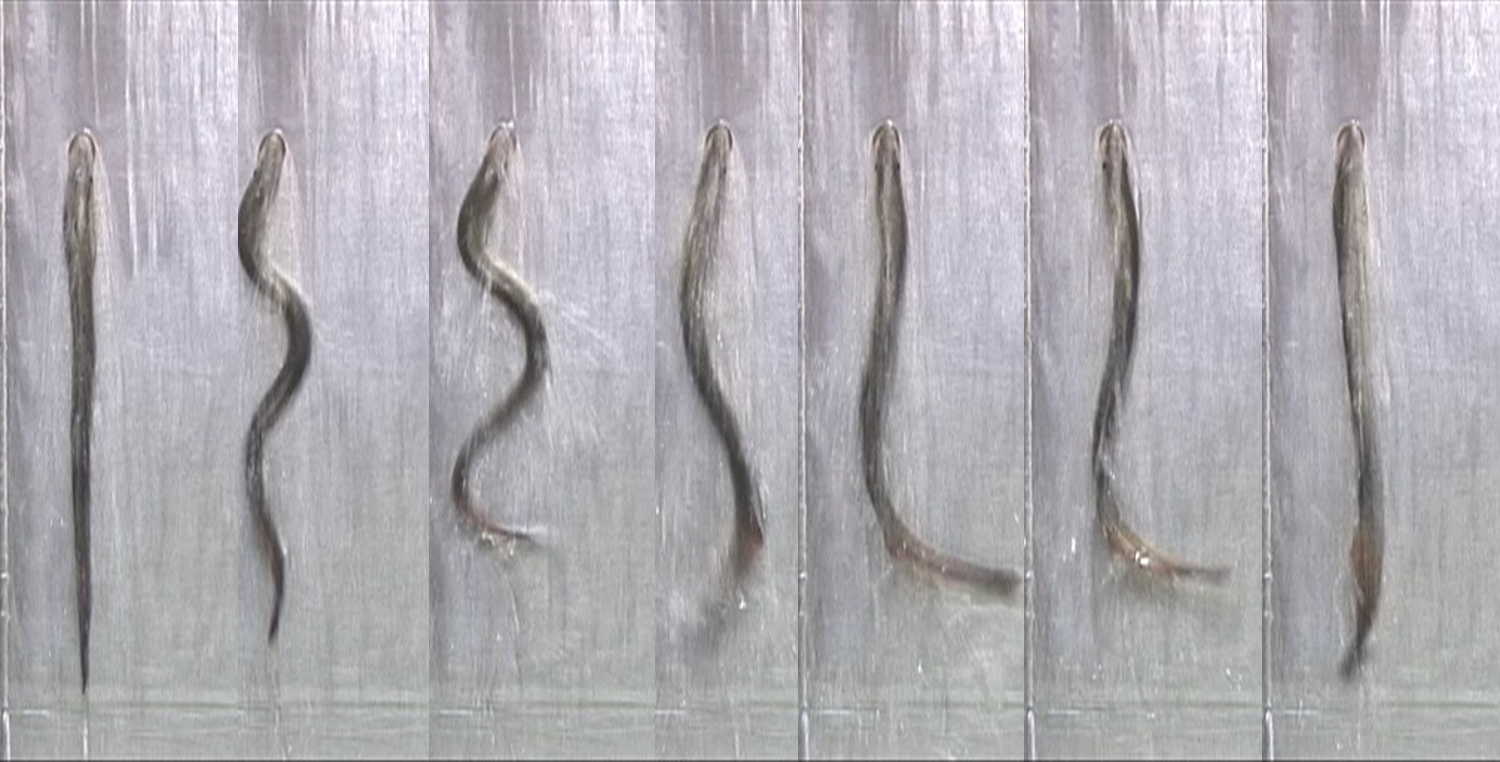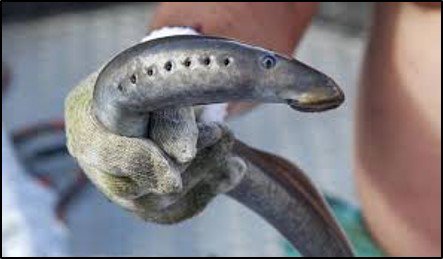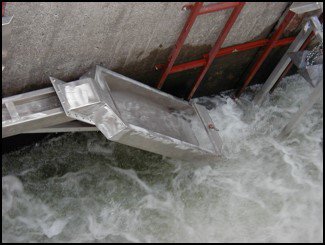Research is Finding Answers to Improving Lamprey Passage Success at Dams
- August 17, 2020
- John Harrison

As salmon return from the ocean and migrate up the Columbia and Snake rivers to spawn, they cross dams by climbing fish ladders. Water rushing downstream through the ladders, which look a little like water-filled staircases, attracts salmon as they approach the dam, and they are able to swim through the ladders usually in a matter of minutes.
But salmon and their cousins, steelhead, are not the only fish returning from the ocean that need to cross dams to reach spawning areas upriver. Consider the Pacific Lamprey, which have a snake-like appearance and a large sucking mouth.
Pacific Lamprey are an ancient, primitive fish native to the West Coast of North America. They spend up to seven years in fresh water as juveniles before migrating to the ocean where they are parasitic feeders on larger fish, and then return to freshwater to spawn. Unlike salmon, which generally return to the very places where they were born, lamprey respond to chemical cues in the water and spawn where there are other lamprey.
Lamprey swim differently than salmon. Fish ladders built for salmon present a difficult obstacle, and as a consequence it can take days for lamprey to pass a dam. Square corners in the ladders are particularly difficult for lamprey. They have to grab onto a vertical or horizontal surface then release, burst ahead, and grab on again. As they creep along in this way, they can lose their grip and be washed down the ladder. Sometimes, they simply don’t try again.
That’s one reason, an important one, why the number of lamprey that return to spawn in tributaries of the Snake and Yakama rivers upstream of multiple dams, has declined over time, said Kinsey Frick, a research biologist and lamprey expert with NOAA’s Northwest Fisheries Science Center in Seattle. This month, Frick presented the results of lamprey passage experiments to the Council.
Each successive dam presents a similar passage challenge; about half of the lamprey that attempt to pass a dam fail. For example, she said that of the 314 marked lamprey that were released below Bonneville Dam in a 2019 experiment, 57.6 percent made it past the dam, but the number that successfully passed declined as the marked fish moved upriver. Only 5.1 percent of the original 314 made it past McNary, three dams and 146 miles upstream.
What to do?

Lamprey scientists with state, federal and tribal agencies studied how lamprey move, how fast they move, and what might improve their passage, and ultimately had an ah-ha! moment: While salmon swim through the turbulent ladders, where the current typically is about 7-10 feet per second, lamprey climb through them at a speed that only reaches about 7 feet per second when they burst ahead. So, take advantage of that characteristic. Modify the ladders to accommodate the way lamprey move, or else design a ladder just for lamprey. Give it a smooth surface to cling to, and a slower flow of water.
It worked.
“Lamprey often have a negative image, due to images of their teeth, frankly a sensationalist way to instill fear, and the fact that many are parasitic in some life history phases,” Frick said. Like salmon, she said, Pacific Lamprey were once an important and dependable high-fat food source for birds, fish, and mammals. They also play a key ecological role in bringing marine derived nutrients such as nitrogen to freshwater systems. But their returns to the rivers in the Pacific Northwest have been on the decline.
“As well, many Northwest and Columbia River tribes consider Pacific Lamprey a first food,” she said. “Their demand for conservation efforts to preserve this resource was the impetus for solutions to passage problems and other research efforts.”
Frick said standard fish ladder designs have openings that are above the floor and away from walls, where lamprey tend to move. Improvements in fish ladders for lamprey passage include reducing the water flow where that is possible, building ramps to allow continuous attachment by lamprey, locating openings in line with the floor, rounding the edges of these openings, positioning openings against the walls and floors where lamprey generally travel, and angling the tops of the fish ladder channels where water flows over in order to create what she called “a variety of flow microclimates” to give lamprey options for passage.
Also, because lamprey generally migrate at night, “refuges,” boxes where lamprey can pull out and rest, have been installed about midway through the ladders to provide places for lamprey to rest during the day without leaving the ladder. Research showed that between 18 and 58 percent of the lamprey that entered ladders with refuges used them, and that subsequently 65-69 percent were detected at the fishway exits.
“However, using refuge boxes did not result in improved upstream migration success, as fewer refuge box users were detected upstream than lamprey that did not use refuge boxes,” Frick said. “Thus, even if you build it and they come, that doesn’t mean there’s a positive benefit.”

These experiments in fish ladders led to development of specific lamprey passage structures. They have smooth metal surfaces and angled ramps – about 45 degrees seems ideal – with multiple entrances across the face of a dam, plus resting boxes – a different design than the refuge boxes.
“Lamprey use of these structures can be high, and once in them, passage success is extremely high,” she said. The longest one installed to date is at Bonneville Dam, and it stretches for 531 feet.
As research and passage improvements continue, some important things have been learned, she said. Lamprey need a surface they can attach to, the water flow cannot be too rapid, and lamprey will climb a vertical wall if such a design is necessary.
Perhaps most importantly, Frick noted, the lamprey research and passage experiments show that while it may be convenient and efficient to design structures for the greatest number of species, it is impossible to appeal to all species simultaneously when a range of swimming capabilities are present in a river system.
“Pacific Lamprey have enough unique swimming characteristics that we have been able to design passage structures specific to them that do not negatively impact other species,” Frick said.



